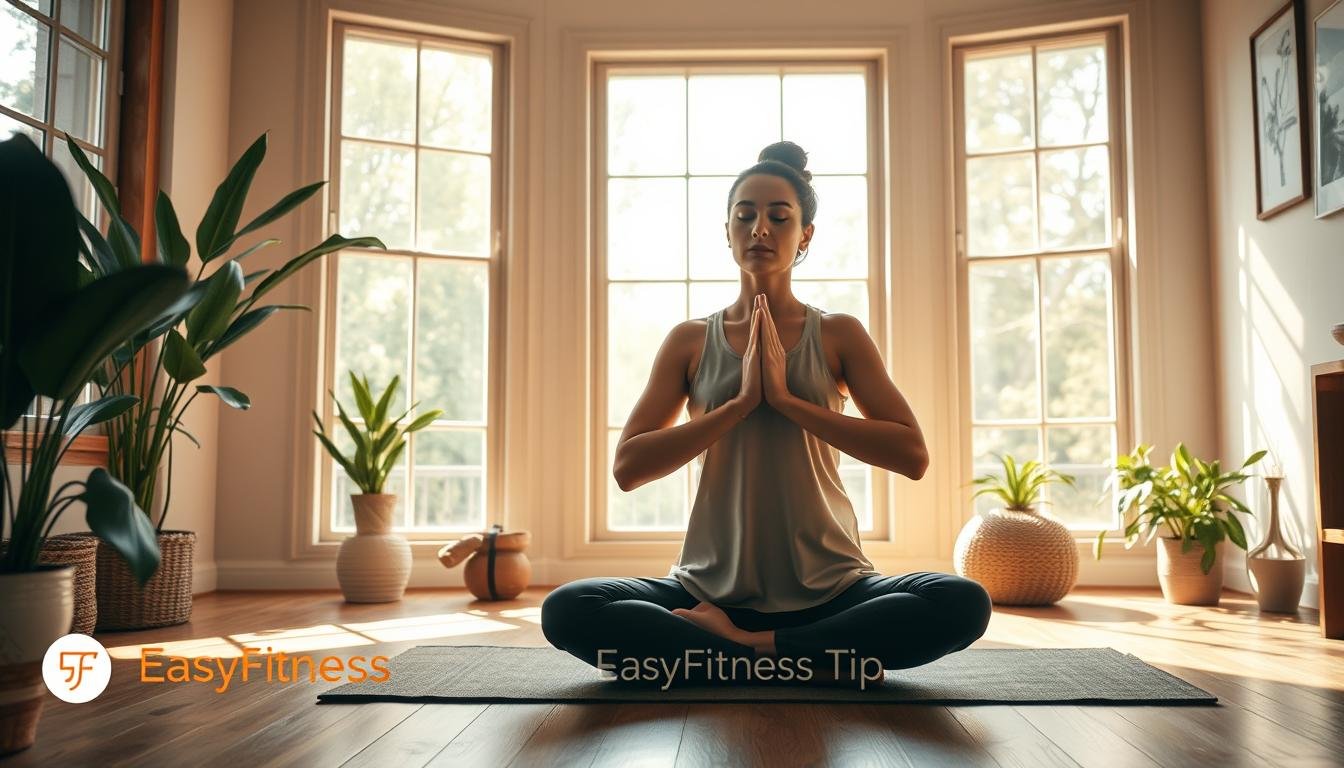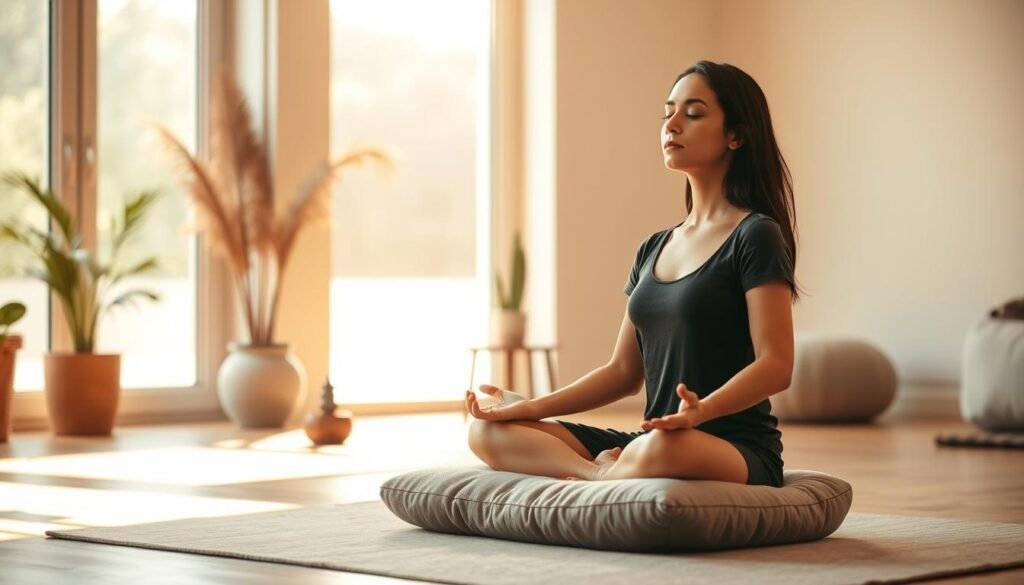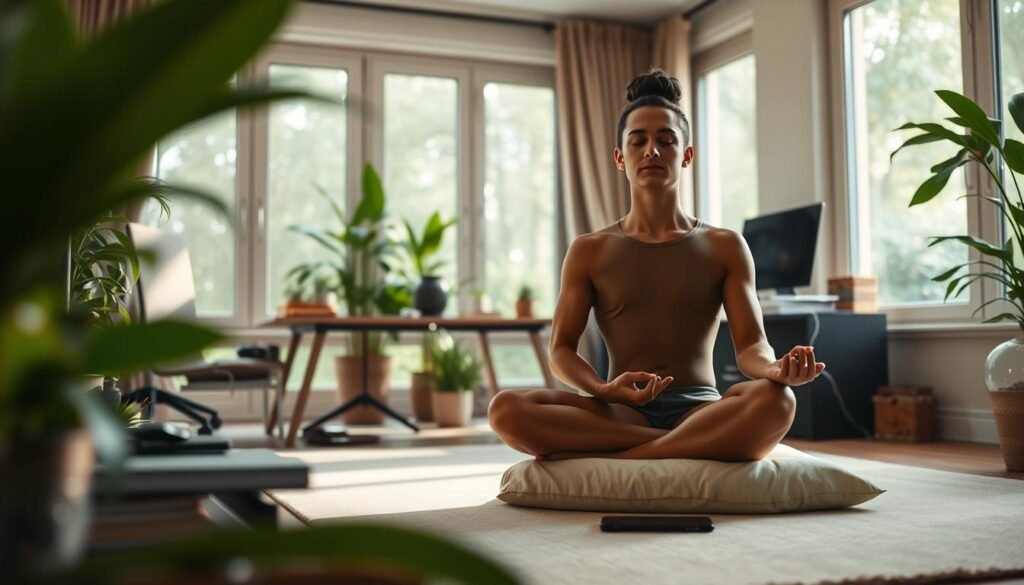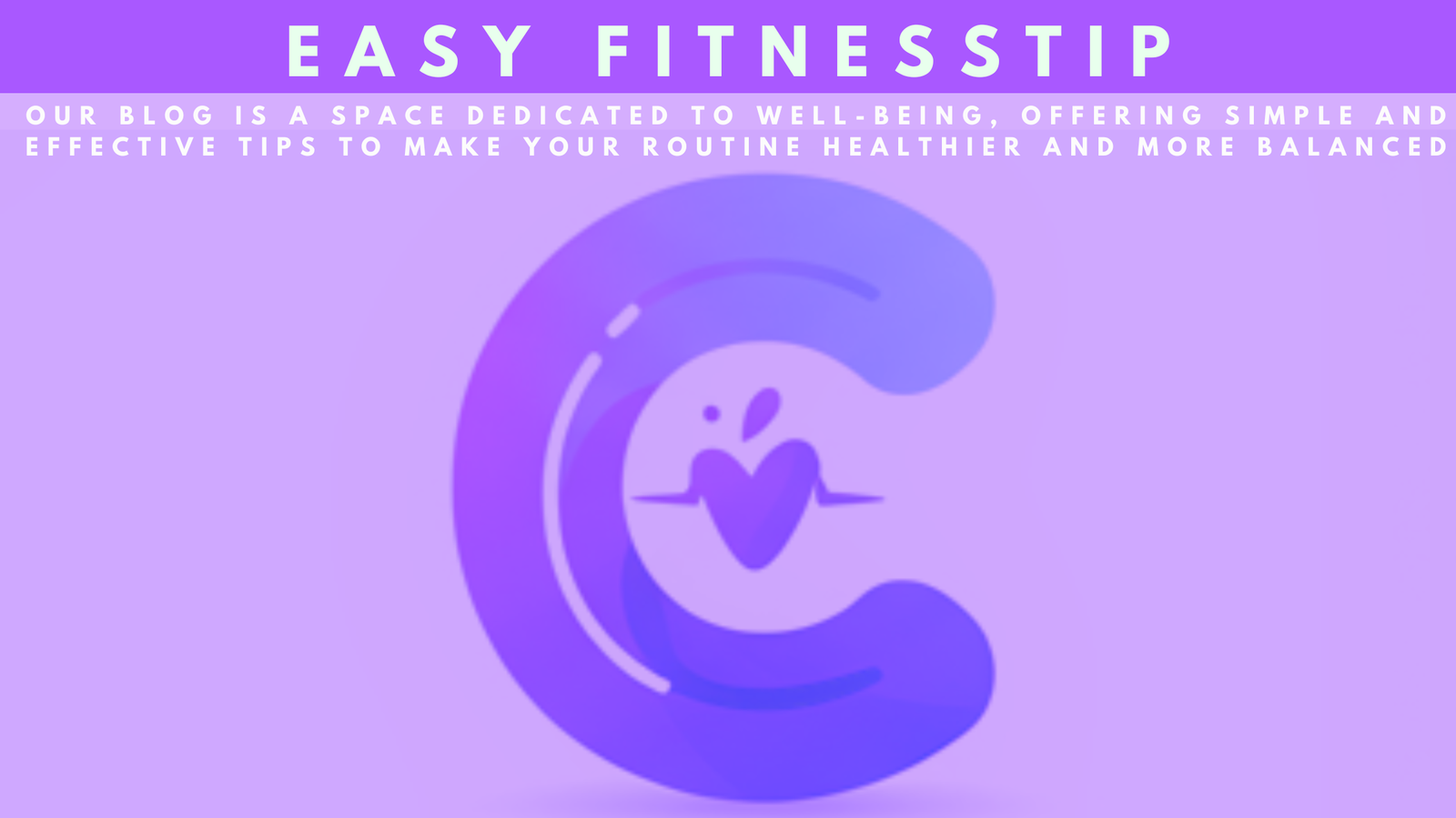
Finding peace in today’s fast world can seem hard. But, improving your mental wellbeing is easier than you think. It starts with simple daily habits.
Spending just a few minutes each day on mindfulness practices can help a lot. This guide will show you how to start with mindfulness. You’ll learn easy exercises for mental wellbeing.
Whether you’re new to mindfulness or want to improve, this guide is here for you. It will support you every step of the way.
Key Takeaways
- Simple mindfulness practices can be easily integrated into daily life.
- Mindfulness is beneficial for reducing stress and improving mental health.
- Beginners can start with short, manageable exercises.
- Consistency is key to experiencing the benefits of mindfulness.
- Mindfulness practices can be adapted to suit individual needs and lifestyles.
Understanding the Power of Mindfulness
Mindfulness is a practice that has been around for a long time. It helps improve mental health. It means paying attention to the now without judging it.
This practice comes from Buddhist meditation but is now used in many areas. It helps people stop worrying and feel less stressed. This makes them feel better overall.
What Is Mindfulness and Why It Matters
Mindfulness is about being fully present and aware of what’s happening now. It’s about noticing your thoughts and feelings without judgment. This helps you stay in the moment.
Mindfulness is important because it can help your mental health. It can make you less stressed and improve your life. The National Institute of Mental Health says it’s good for managing stress.
The Science Behind Mindfulness and Mental Health
Many studies have looked into how mindfulness affects mental health. They found it can help with anxiety and depression. It changes the brain in ways that help with attention and emotions.
A study in the Journal of the American Medical Association found mindfulness meditation helps with anxiety and depression. Mindfulness-based stress reduction programs also improve mental health by reducing stress and helping people cope better.
| Benefits of Mindfulness | Description | Impact on Mental Health |
|---|---|---|
| Reduced Stress | Mindfulness practices help in managing stress by promoting relaxation and reducing rumination. | Improves overall mental wellbeing and reduces symptoms of anxiety and depression. |
| Improved Emotional Regulation | Mindfulness enhances the ability to regulate emotions, leading to better responses to challenging situations. | Enhances resilience and reduces the risk of mental health disorders. |
| Enhanced Focus and Concentration | Regular mindfulness practice improves attention and concentration by training the mind to stay present. | Improves productivity and reduces mind-wandering, which can contribute to anxiety. |
The Benefits of Practicing Mindfulness at Home
Mindfulness exercises at home are easy and effective for mental health and stress relief. Spending a few minutes each day on mindfulness can greatly improve your life quality.
Immediate Benefits for Stress Reduction
Mindfulness offers quick stress relief. Activities like deep breathing and body scan meditation calm the mind and body. Regular mindfulness practice can lower stress levels over time.
Long-term Impact on Mental Wellbeing
Mindfulness has big benefits for mental health over time. It can make you feel better, more aware of yourself, and more positive. Mindfulness helps individuals develop a more positive outlook on life, making it easier to handle challenges.
Studies show mindfulness changes the brain for better emotional control and less stress.
Physical Health Improvements Through Mindfulness
Mindfulness is good for your body too. Reduced stress levels can lower blood pressure, improve sleep, and boost the immune system. Mindful eating can also help digestion and reduce pain.
- Lower blood pressure
- Improved sleep quality
- Enhanced immune function
- Better digestion
- Reduced chronic pain symptoms
Adding mindfulness to your daily routine at home can lead to a healthier, more balanced life.
Creating Your Mindful Space at Home
Turning a corner of your home into a peaceful spot can help you focus on mindfulness. Having a special place for mindfulness can make it feel more real. It tells your mind it’s time to calm down and focus.
A well-thought-out meditation space can really boost your mindfulness practice. To make such a space, think about these key elements.
Designing a Dedicated Meditation Area
Begin by picking a quiet and cozy spot in your home. It could be a bedroom corner, a part of your living room, or a peaceful outdoor area. The most important thing is to find a spot where you can relax without distractions.
Key considerations for your meditation area include:
- A comfy seating arrangement, like a cushion or chair
- A soothing color scheme
- Simple decor to avoid visual distractions
- A private and quiet spot
Sensory Considerations for Your Practice Space
The senses play a big role in your meditation space. Think about these sensory factors to make a space that supports your practice.
Sensory elements to consider:
- Visual: Choose calming colors, natural light, and simple decor for a peaceful vibe.
- Auditory: Use soundproofing or calming music to block out loud noises.
- Olfactory: Add calming scents like lavender or incense to help you relax.
- Tactile: Pick comfy seating and think about adding things like a weighted blanket or soft textures.
By designing your meditation space with care and considering the senses, you can make a space that helps you practice mindfulness. This can improve your overall well-being.
Foundational Mindfulness Exercises for Beginners
Starting with simple exercises is key for beginners in mindfulness. It’s about being present in the moment. With the right techniques, beginners can easily add it to their daily lives.
Mindful Breathing Techniques
Mindful breathing is a simple yet effective exercise. It involves focusing on your breath and letting go of distracting thoughts. Find a comfortable seated position, close your eyes, and focus on your breath.
Notice the sensation of the air entering and leaving your nostrils. Try to maintain this focus for a few minutes.
Tips for Effective Mindful Breathing:
- Start with short sessions (5-10 minutes) and gradually increase the duration.
- Use a timer to avoid checking your watch.
- Gently acknowledge wandering thoughts and refocus on your breath.
Body Scan Meditation Practice
Body scan meditation is another foundational exercise. It encourages connection with your body and release of tension. Lie down or sit comfortably, and bring your attention to different parts of your body.
Start from your toes and move up to the top of your head. Notice any sensations, tension, or discomfort without judgment.
Practicing body scan meditation can help you develop greater body awareness and relaxation.
Five-Minute Mindfulness Exercises for Busy Days
Even a few minutes of mindfulness practice can be beneficial. Here are some quick exercises:
- Mindful Walking: Take a short walk, paying attention to the sensation of your feet touching the ground.
- Focused Listening: Spend a few minutes listening to a piece of music or nature sounds without distraction.
- Mindful Breathing: Practice the mindful breathing technique described earlier, even if it’s just for a minute or two.
These exercises can be adapted to fit even the busiest of lifestyles. They provide a moment of calm and clarity.
Reduce Stress with Mindfulness: Targeted Practices
Adding mindfulness to your daily routine can lower stress levels. Mindfulness helps you stay in the present moment. It reduces worries and stress.
Identifying Stress Triggers in Your Home Environment
The first step is to find out what stresses you at home. It might be clutter, noise, or family issues. Knowing these triggers is key.
To spot your stressors, take a few minutes each day to think about your day. Ask yourself: What happened? How did I feel? What did I do?
Quick Stress-Relief Mindfulness Techniques
There are quick ways to calm down during the day. Try the “4-7-8” breathing method. Breathe in for 4 seconds, hold for 7, and breathe out for 8.
Another method is a mindful walk. Walk for a bit, focusing on your feet, legs, and breath.
Mindful Responses to Stressful Situations
Learning to handle stress mindfully is crucial. It means being fully present and calm, not reacting quickly.
When stress hits, stop and breathe deeply. Then, think clearly about the situation and respond wisely, not impulsively.
By using these mindfulness tips, you can reduce stress with mindfulness and feel better overall.
Mindfulness Meditation: Deepening Your Practice
Mindfulness meditation can greatly improve your mental and physical health. As you keep practicing, you might want to make your practice deeper. Deepening your mindfulness meditation helps you stay present, lowers stress, and boosts your wellbeing.

Guided Meditation Resources for Home Practice
Guided meditation resources are very helpful for deepening your practice. They offer gentle guidance to keep you focused. You can find these resources on apps, online platforms, and YouTube channels focused on mindfulness.
Apps like Headspace and Calm are popular for guided meditations. They have meditations for all levels. “Guided meditations are great for beginners,” says mindfulness expert Jon Kabat-Zinn.
“The best way to take care of the future is to take care of the present moment.”
Extending Your Meditation Duration Gradually
As you get more comfortable with meditation, try to meditate for longer. This lets you reach deeper relaxation and focus. Start by adding a few minutes each week. Be patient as you build up your endurance.
- Begin with small increments, such as adding 2-3 minutes to your sessions.
- Focus on your breath or a mantra to help maintain your concentration.
- Be gentle with yourself; it’s okay if your mind wanders.
Working Through Common Meditation Challenges
Meditation comes with challenges, like staying focused or feeling restless. To overcome these, try changing your meditation position, using a guided meditation, or practicing mindfulness in daily life. This can improve your overall mindfulness.
By using these strategies and staying consistent, you can deepen your mindfulness meditation. You’ll enjoy the many benefits it offers.
Mindfulness for Specific Mental Health Concerns
Mindfulness is a helpful tool for many mental health issues, like anxiety and sleep problems. It can be customized to fit specific needs, leading to better mental health. This part will look at how mindfulness helps with anxiety, depression, and sleep issues.
Mindfulness Approaches for Anxiety Relief
Mindfulness is great for anxiety. It uses techniques like mindful breathing and body scan meditation. These help people stay in the present, reducing worries about the future or past.
- Mindful Breathing: Focus on the breath to calm the mind.
- Body Scan: Notice sensations in the body to release tension.
Practices for Depression and Low Mood
Mindfulness is also good for depression. It teaches a non-judgmental way to be aware of the present. Loving-kindness meditation helps build compassion and kindness towards oneself.
Mindfulness for Better Sleep Quality
Mindfulness can also help with sleep quality. It promotes relaxation and lowers stress. Using progressive muscle relaxation and meditation before bed can tell the body it’s time to sleep.
Incorporating Mindfulness into Daily Home Activities
Turning daily routines into mindfulness exercises can boost your well-being. By adding mindfulness to everyday tasks, you create a more peaceful home. This makes your living space more present and calm.
Mindful Eating Practices
Mindful eating means focusing fully on eating and drinking. It’s about enjoying each bite, noticing food’s colors, smells, and textures. And eating slowly.
To start mindful eating, eat one meal a day without distractions. Turn off the TV and put away your phone. Focus on the taste, texture, and smell of your food. Pay attention to how it feels in your mouth and the act of swallowing.
| Benefit | Description |
|---|---|
| Enhanced Enjoyment | Savoring each bite can make meals more enjoyable. |
| Improved Digestion | Eating slowly can aid in better digestion. |
| Reduced Stress | Focusing on eating can reduce stress and anxiety. |
Mindfulness While Doing Household Chores
Household chores can become mindfulness exercises by focusing on the sensations and actions. For example, when washing dishes, notice the water’s feel, the sound of the suds, and the dishes in your hands.
Being fully present in these tasks turns them into meditative experiences. They bring calm and fulfillment.
Mindful Communication with Family Members
Mindful communication means being fully present and attentive when talking to others. It’s about listening carefully to what they say, both verbally and non-verbally. And responding thoughtfully.
To practice mindful communication, give the person your full attention. Avoid interrupting and try to understand their perspective. Respond in a way that is thoughtful and considerate.
Overcoming Common Mindfulness Misconceptions and Challenges
Starting your mindfulness journey can be tricky. It’s important to know the common obstacles and myths. Mindfulness helps reduce stress and boosts mental health. But, it can be hard to overcome these challenges.
By understanding and tackling these barriers, you can make your mindfulness practice more rewarding.
Addressing the “I Can’t Meditate” Mindset
Many think they can’t meditate because their mind is too busy. But, meditation is a skill that grows with practice. It’s key to start with a beginner’s mindset and focus on the journey, not the goal.
Simple exercises like focusing on your breath or body can boost your confidence and skills in meditation.

Finding Time When You Think You Have None
Many struggle to find time for mindfulness. Adding mindfulness to daily tasks is a great way to solve this problem. Mindfulness can be practiced during everyday activities like eating, walking, or doing chores.
For example, mindful eating makes mealtime a mindfulness practice. It involves paying attention to the taste, texture, and smell of your food. Walking can also become a mindfulness exercise by noticing how your feet touch the ground or the rhythm of your breathing.
Advanced Mindfulness Techniques to Try at Home
Exploring advanced mindfulness techniques can deepen your connection with yourself and the world. These practices help you move beyond the basics. You can easily add them to your daily routine at home.
Loving-Kindness Meditation Practice
Loving-kindness meditation, or Metta meditation, focuses on love, compassion, and kindness. You repeat phrases like “May I be happy, may I be healthy, may I be at peace” for yourself and others. It boosts positive feelings and empathy.
To start, sit comfortably, close your eyes, and breathe deeply. First, direct kindness to yourself, then to friends, neutral people, and even those you find challenging. Aim for warmth and understanding.
Mindful Movement and Walking Meditation
Mindful movement, like walking, yoga, or tai chi, focuses on being fully present. Mindful walking is especially powerful. It involves noticing each step, your legs’ movement, and your breath.
For walking meditation, find a quiet spot to walk slowly. Focus on your feet touching the ground, your body’s movement, and your breath. It brings calm and clarity to your day.
| Practice | Benefits | Tips for Beginners |
|---|---|---|
| Loving-Kindness Meditation | Increases positive emotions, fosters empathy | Start with self-directed kindness, be patient |
| Mindful Walking | Cultivates mindfulness, reduces stress | Choose a quiet area, focus on each step |
| Mindfulness Journaling | Enhances self-reflection, clarifies thoughts | Write regularly, explore different formats |
Mindfulness Journaling Exercises
Mindfulness journaling involves writing down your thoughts and feelings. It helps you process experiences, gain clarity, and understand yourself better. Writing down your reflections can reveal patterns, release emotions, and increase gratitude.
Start by choosing a notebook you like and writing at the same time each day. Write about your day, things you’re thankful for, or insights. Try different writing styles, like free writing or prompts, to find what works for you.
Building a Sustainable Mindfulness at Home Routine
Creating a mindfulness routine at home takes dedication, but it’s worth it. Being consistent is key to seeing the benefits of mindfulness on your health.
Creating a Realistic Daily Practice Schedule
To start a daily mindfulness practice, begin small. Start with 5-10 minutes a day and increase as you get more comfortable.
Think about your daily routine and pick the best time for mindfulness. Early morning works for many, but find a time that fits your life.
Tracking Your Progress and Benefits
Tracking mindfulness progress can really help. Use a mindfulness journal to note your daily practices and how you feel. This helps you see the good changes and make improvements.
- Note the duration of your mindfulness practice
- Record any challenges or insights
- Reflect on how mindfulness has impacted your daily life
Adapting Your Practice as You Advance
As you grow in mindfulness, it’s important to adapt your mindfulness practice. Try new types of meditation, increase your time, or add mindfulness to daily activities.
Being open to change keeps your practice fresh and beneficial.
Digital Tools and Resources for Home Mindfulness
In today’s digital age, mindfulness practice is more accessible than ever. This is thanks to many digital tools and resources at our fingertips.
Guided meditation apps and online mindfulness communities have made it easier. Now, people can practice mindfulness from home easily.
Recommended Apps for Guided Practice
Many apps are popular for their guided meditation programs. They also have easy-to-use interfaces. Here are some top picks:
- Headspace: Known for its personalized meditation plans and engaging animations.
- Calm: Offers a wide range of guided meditations, sleep stories, and relaxing music.
- Insight Timer: Features a vast library of free guided meditations and a timer for personal practice.
| App Name | Key Features | Cost |
|---|---|---|
| Headspace | Personalized plans, animations | Subscription-based |
| Calm | Guided meditations, sleep stories | Subscription-based |
| Insight Timer | Vast library of free content, timer | Free, with optional donations |
Online Communities and Support Groups
Online communities are key for support and motivation. Some notable platforms include:
- Mindful.org: Offers articles, guided meditations, and a community forum.
- Reddit’s r/Mindfulness: A community-driven forum for sharing experiences and advice.
These resources provide guidance and foster connection among practitioners.
By using these digital mindfulness tools, individuals can improve their mindfulness practice. It becomes a more enjoyable part of their daily lives.
Conclusion: Your Journey to Mindful Living Starts at Home
The journey to mindful living is a personal and rewarding one. It starts with the simple decision to practice mindfulness at home.
We’ve explored the many benefits of mindfulness. These include reducing stress and anxiety and improving mental wellbeing. By now, you see that mindfulness is not just a practice, but a way of living. It can lead to profound positive changes in your daily life.
As you start your mindfulness journey, remember to be patient and kind to yourself. It’s a path that requires commitment, but the rewards are worth it. Begin by creating a dedicated space for mindfulness in your home. Then, gradually add mindfulness to your daily activities.
| Key Elements | Benefits | Tips for Implementation |
|---|---|---|
| Dedicated Mindfulness Space | Enhances focus and calmness | Choose a quiet, clutter-free area |
| Mindfulness Exercises | Reduces stress and anxiety | Start with short, guided sessions |
| Mindful Daily Activities | Improves overall wellbeing | Practice mindfulness during routine tasks like eating or walking |
As you continue on your mindfulness journey, exploring different techniques and resources can be helpful. This includes guided meditations and mindfulness apps. The key is to stay consistent and adapt your practice as you grow.
By embracing mindful living, you’re not only improving your life but also creating a more peaceful environment for others. So, take the first step today. Begin your journey towards a more mindful, serene, and fulfilling life at home.
References and Sources
This guide to mindfulness at home comes from a lot of research and expert advice. If you want to learn more, here are some great resources to start with.
There’s a lot of research on mindfulness and its impact on mental health. You can find reliable info from places like the National Center for Complementary and Integrative Health and the American Psychological Association. They share a lot about mindfulness practices and their benefits.
Want to learn more about mindfulness? Check out guided meditation apps like Headspace and Calm. They offer great exercises to help you practice mindfulness and live more mindfully.
Using these resources, you can keep learning and improving your mindfulness. This will help you create a more peaceful and mindful home environment.










